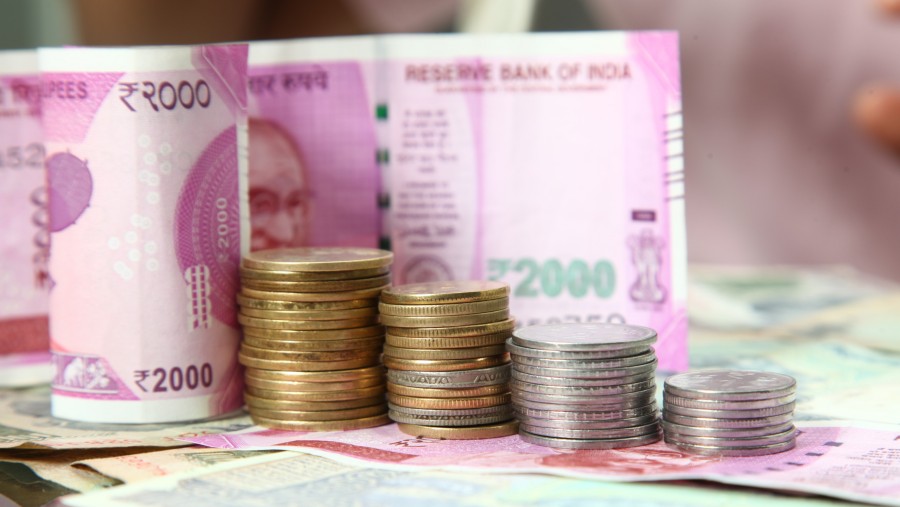The outgoing Trump Administration today labelled Vietnam and Switzerland as currency manipulators and named India among 10 nations that have been placed on a monitoring list that will subject their currency practices and macroeconomic policies to close scrutiny by the US authorities and the International Monetary Fund.
The US Treasury report, titled "Macroeconomic and Foreign Exchange Policies of Major Trading Partners of the United States", accused Vietnam and Switzerland for the first time of improperly intervening in the foreign exchange markets and set the stage for a major confrontation with the two trading partners.
The two nations will now have to enter into negotiations with the United States and the International Monetary Fund to address the situation.
This is the third time that the Trump administration has taken the fairly unusual step of labelling a country as a currency manipulator. It applied the label to China in 2019 the first time since 1994 while the two countries were negotiating a trade deal. The administration later dropped the official designation but the Chinese yuan has remained on the Treasury's list of currencies it is monitoring.
Besides India, the countries that figure in the monitoring list are China, Japan, South Korea, Germany, Italy, Singapore, Malaysia, Taiwan, and Thailand.
Taiwan and Thailand have been named for the first time along with India.
"The US Treasury is...concerned by certain economies raising the scale and persistence of foreign exchange intervention to resist appreciation of their currencies," the report said.
The report said a number of countries had conducted foreign exchange market intervention in a "persistent, onesided manner" that exceeded the Treasury's criteria that were devised pursuant to the US Trade Facilitation and Trade Enforcement Act 2015.
"These actions occurred mostly during a period of dollar weakness as countries sought to limit appreciations of their currencies," it said.
The report named four major trading partners Vietnam, Switzerland, India and Singapore that had intervened in the foreign exchange market "in a sustained, asymmetric manner" over the four quarters through June 2020.
Of these, Vietnam and Switzerland exceeded two other objective criteria established by the US Treasury to identify potentially unfair currency practices or excessive external imbalances which would weigh on US growth or harm US workers or firms.
India met two of the three criteria: it had a material current account surplus and engaged in persistent, onesided intervention over the reporting period.
Ananth Narayan Professor, SP Jain Institute of Management and Research told The Telegraph that the development was not surprising since the Reserve Bank had purchased lot of dollars over the last few months and, in this fiscal year, it has been well over $ 90 billion. Moreover, India also had a trade surplus with the US.
An economy meeting two of the three criteria in the 2015 Act is placed on the monitoring list.
Once on the List, an economy will remain there for at least two consecutive reports to help ensure that any improvement in performance versus the criteria is durable and is not due to temporary factors, the US Treasury report said.
As a further measure, the US Administration will add and retain on the monitoring list any major U.S. trading partner that accounts for a large and disproportionate share of the overall US trade deficit even if that economy has not met two of the three criteria from the 2015 Act.
Currency manipulation labels are supposed to set off talks with the United States and can involve input from the International Monetary Fund. If the concerns of the Treasury Department are not resolved, the United States could impose an array of penalties including tariffs.
Why India?
The US Treasury report said the Reserve Bank of India had purchased foreign exchange on net in 10 of the 12 months through June 2020, with net intervention (both spot and forward intervention) reaching $64 billion, or 2.4 per cent of GDP. While purchases slowed during the onset of the pandemic, and the RBI engaged in net sales in March 2020, the RBI’s net purchases again accelerated in mid 2020 as portfolio inflows resumed and foreign direct investment remained strong.
"These purchases have led to a rapid rise in (India's) total reserves that are now well in excess of standard reserve adequacy benchmarks. As of June 2020, foreign currency reserves stood at $466 billion, equal to 4.4 times gross shortterm external debt. Reserves have continued to grow in recent months, reaching $502 billion in September 2020 as purchases accelerated further in July and August," the report added.
The report added that after depreciating 3.4 per cent against the dollar in the second half of 2019, the rupee depreciated an additional 5.5 per cent during the first half of 2020. The rupee weakened 6.6 per cent and 1.7 per cent on a nominal and real effective basis, respectively, over the four quarters through June 2020.
"The rupee has diverged somewhat from peer currencies, however, amid RBI intervention," it added.
The report went on to prescribe a course of action to India's monetary authorities.
"The (Indian) authorities should allow the exchange rate to move to reflect economic fundamentals and limit foreign exchange intervention to circumstances of disorderly market conditions.
India can also leverage the recovery period to pursue structural reforms that will open its
market further to foreign investment and trade, including foreign portfolio investment in
Indian sovereign and subsovereign bonds, thereby fostering stronger longterm growth.
(With inputs from The New York Times)










